Calliostoma ligatum (Gould, 1849)Common name(s): Blue top shell, costate top shell |
|
| Synonyms: C. ligatus, C. costatum | 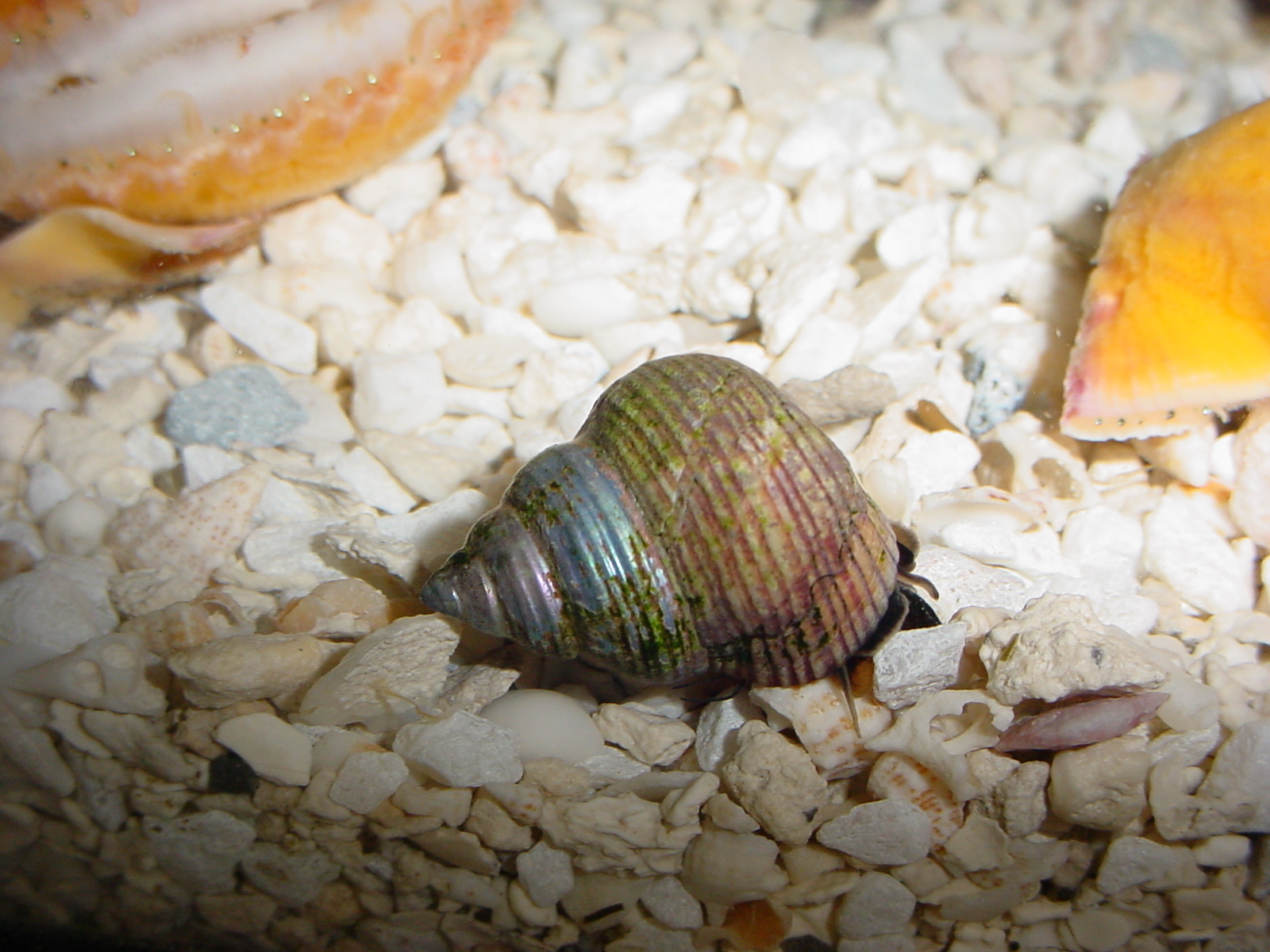
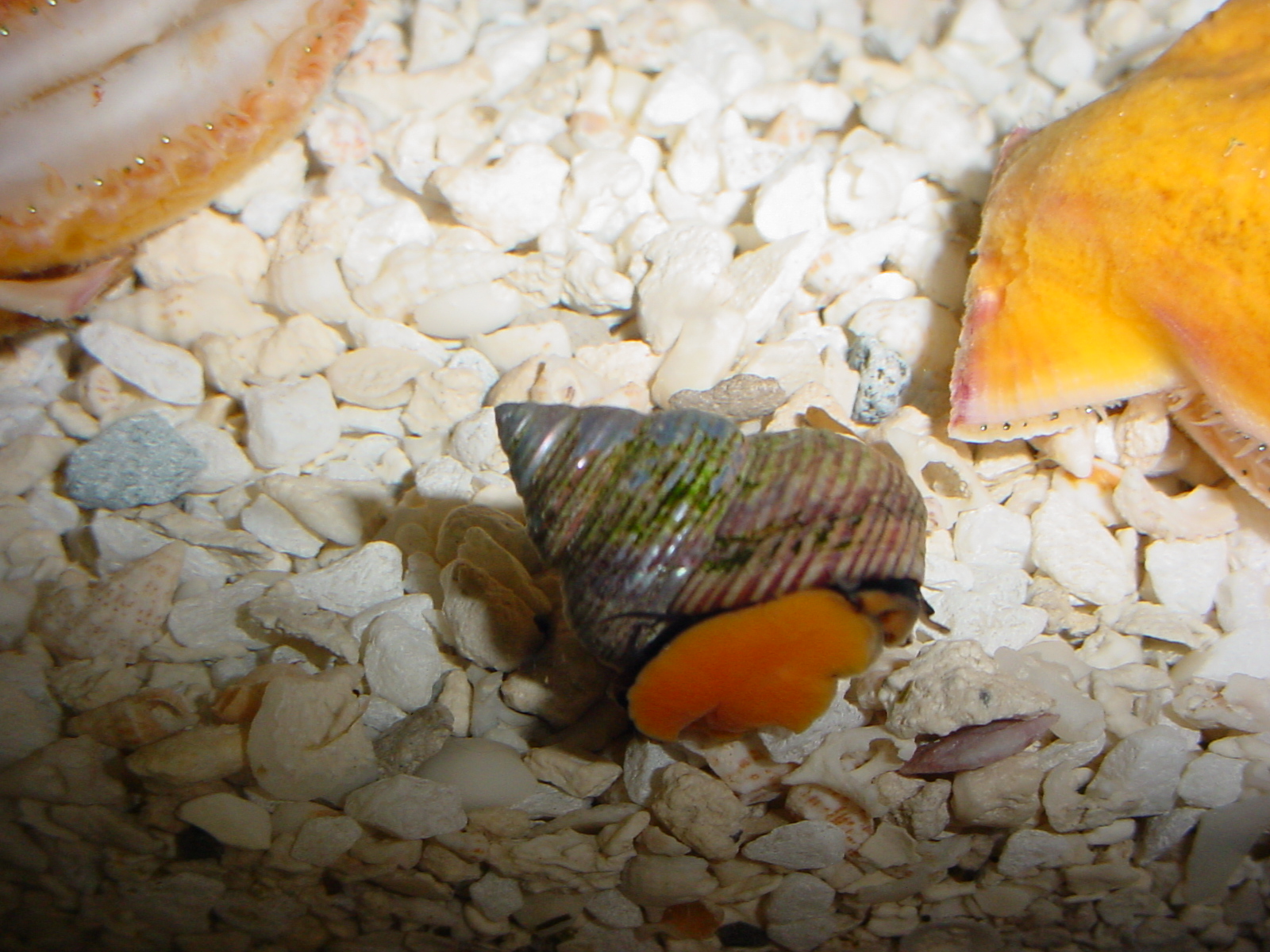 |
| Phylum Mollusca
Class Gastropoda Subclass Prosobranchia Order Archaegastropoda Suborder Trochina Family Trochidae |
|
| Calliostoma ligatum captured at Sares Head and held in aquarium, spring 2004. About 2 cm diameter. | |
| (Photo by: Dave Cowles) | |
How to Distinguish from Similar Species: C. variegatum (which is found mostly in deep water) has a shell mostly tan, yellowish, or pale pink, and the spirals are beaded. C. annulatum also has beaded spirals and the lower spiral on each whorl is blue or purplish.
Geographical Range: Prince William SoundAlaska to San Diego California. Uncommon in southern end of range.
Depth Range: Shallow intertidal to subtidal. Abundant in low intertidal in Puget Sound (This is the only Calliostoma that is abundant in the Sound).
Habitat: Common in eel grass and kelp. Often found on brown algae such as Cystoseira and Macrocystis.
Biology/Natural History: Found in and around kelp beds. Eats the kelp itself and adhering bryozoans, diatoms, and detritus. May eat tunicate Cystodytes lobatus. Has two muscular waves of contraction on foot while crawling, which move from back to front of the foot and are out of phase with each other. Crawl rapidly away from some seastars. Snail covers shell with mucus which may aid in avoiding capture by seastars.
According to Baltzley et al., (2011), many gastropods, including this species, have a special network of pedal ganglia in their foot which assists in crawling. The two main neurons involved produce pedal peptides which elicit an increase in the rate of beating of cilia on the foot, resulting in crawling.
| Return to: | |||
| Main Page | Alphabetic Index | Systematic Index | Glossary |
References:
Dichotomous Keys:
Kozloff
(1987)
Smith and Carlton, 1975
General References:
Flora and Fairbanks, 1966Morris et al., 1980
Kozloff, 1993
Scientific Articles:
Baltzley, Michael J., Allison Serman, Shaun D. Cain, and Kenneth J. Lohmann, 2011. Conservation of a Tritonia pedal peptides network in gastropods. Invertebrate Biology 130: 4 pp. 313-324
General Notes and Observations: Locations, abundances, unusual behaviors, etc.:
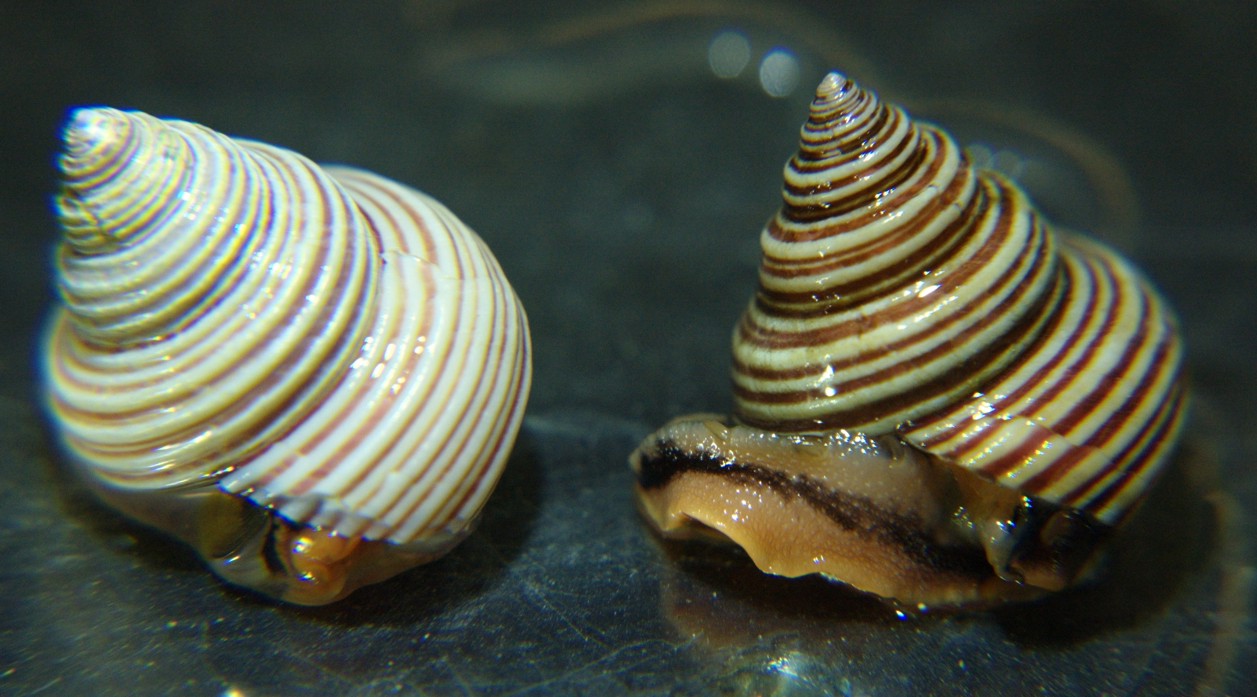
Different individuals may be slightly different colors. Photo by Dave Cowles, July 2012
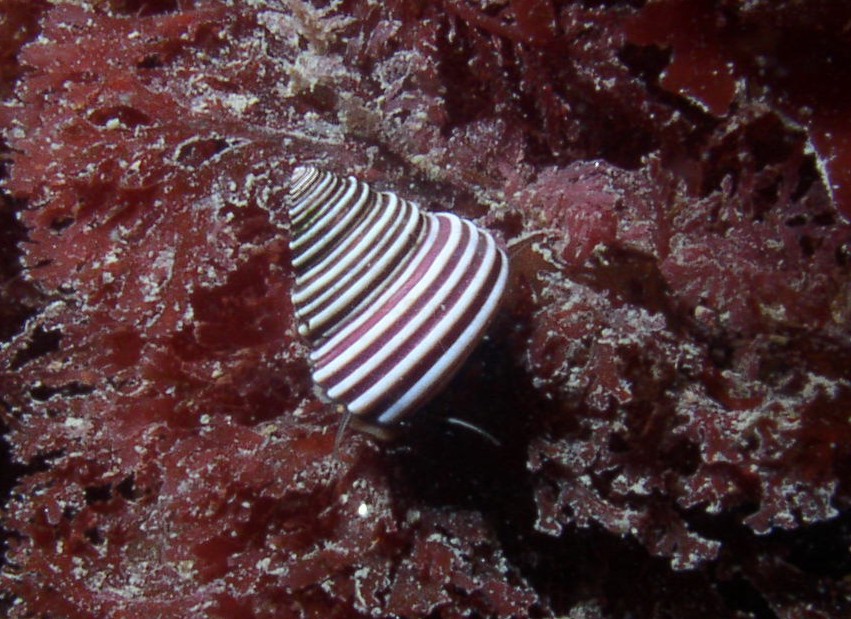
An underwater photo by Kirt Onthank, July 2007
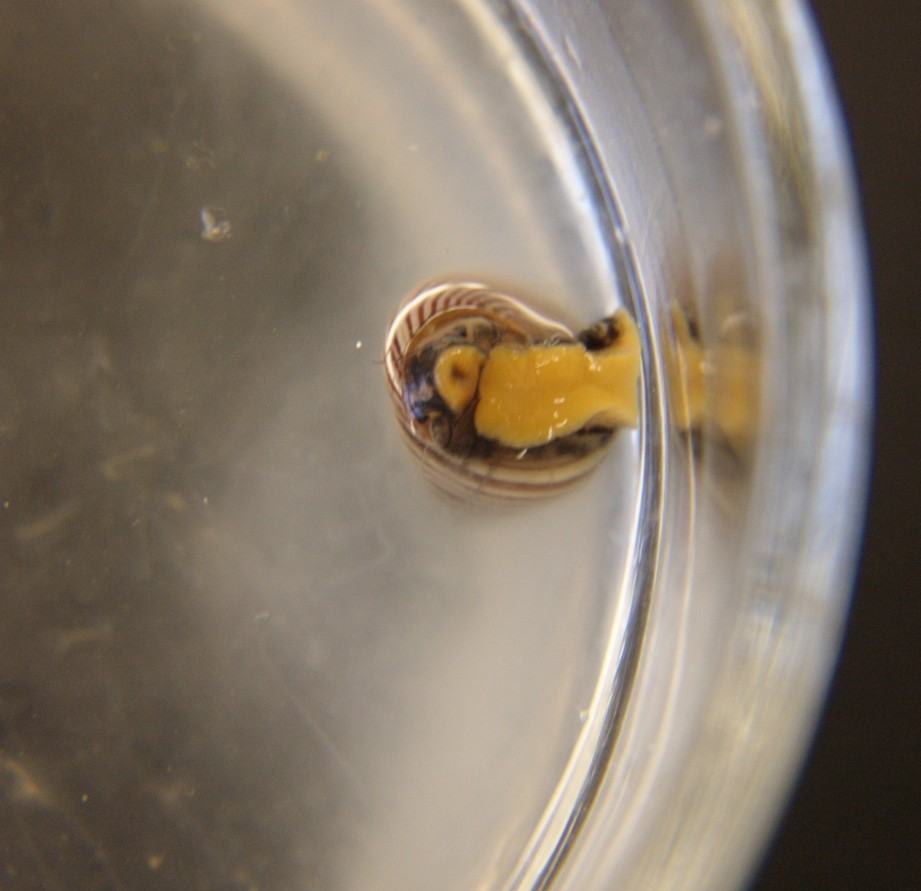
This individual has begun to realease a cloud of sperm into the dish. Photo by Dave Cowles, July 2012
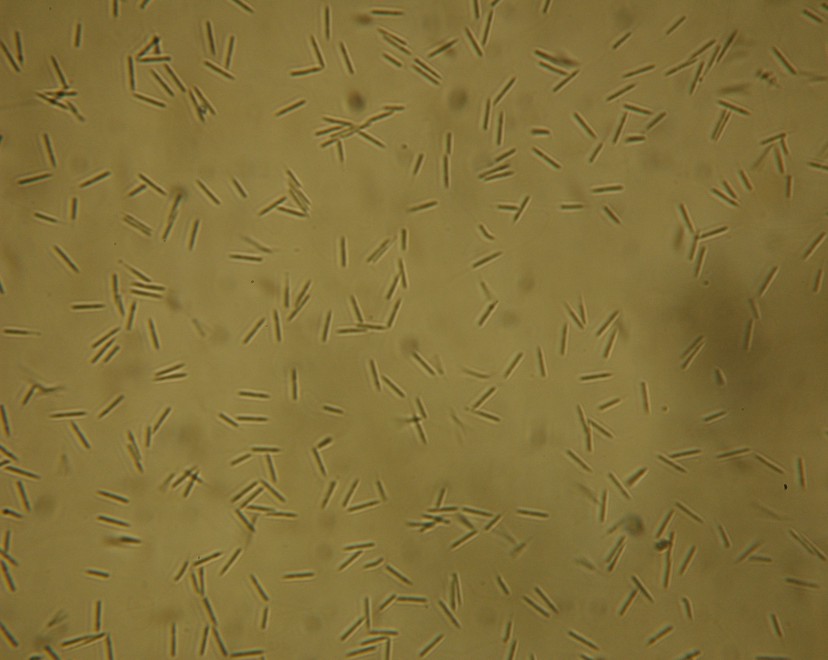
The sperm of Calliostoma ligatum is pinlike and highly motile. Length about 12 microns. Photo by Dave Cowles, July 2012
Authors and Editors of Page:
Dave Cowles (2004): Created original page